- Home
- J. R. R. Tolkien
Unfinished Tales Page 2
Unfinished Tales Read online
Page 2
There are however great differences in the course of the long Narn in the degree to which the narrative approaches a perfected or final form. The concluding section (from The Return of Túrin to Dor-lómin to The Death of Túrin) has undergone only marginal editorial alteration; while the first section (to the end of Túrin in Doriath) required a good deal of revision and selection, and in some places some slight compression, the original texts being scrappy and disconnected. But the central section of the narrative (Túrin among the outlaws, Mîm the Petty-dwarf, the land of Dor-Cúarthol, the death of Beleg at Túrin’s hand, and Túrin’s life in Nargothrond) constituted a much more difficult editorial problem. The Narn is here at its least finished, and in places diminishes to outlines of possible turns in the story. My father was still evolving this part when he ceased to work on it; and the shorter version for The Silmarillion was to wait on the final development of the Narn. In preparing the text of The Silmarillion for publication I derived, by necessity, much of this section of the tale of Túrin from these very materials, which are of quite extraordinary complexity in their variety and interrelations.
For the first part of this central section, as far as the beginning of Túrin’s sojourn in Mîm’s dwelling on Amon Rûdh, I have contrived a narrative, in scale commensurate with other parts of the Narn, out of the existing materials (with one gap, see p. 124 and note 12); but from that point onwards (see p. 135) until Túrin’s coming to Ivrin after the fall of Nargothrond I have found it unprofitable to attempt it. The gaps in the Narn are here too large, and could only be filled from the published text of The Silmarillion; but in an Appendix (pp. 193 ff.) I have cited isolated fragments from this part of the projected larger narrative.
In the third section of the Narn (beginning with The Return of Túrin to Dor-lómin) a comparison with The Silmarillion (pp. 215 – 26) will show many close correspondences, and even identities of wording; while in the first section there are two extended passages that I have excluded from the present text (see p. 76 and note 1, and p. 86 and note 2), since they are close variants of passages that appear elsewhere and are included in the published Silmarillion. This overlapping and interrelation between one work and another may be explained in different ways, from different points of view. My father delighted in re-telling on different scales; but some parts did not call for more extended treatment in a larger version, and there was no need to rephrase for the sake of it. Again, when all was still fluid and the final organisation of the distinct narratives still a long way off, the same passage might be experimentally placed in either. But an explanation can be found at a different level. Legends like that of Túrin Turambar had been given a particular poetic form long ago – in this case, the Narn i Hîn Húrin of the poet Dírhavel – and phrases, or even whole passages, from it (especially at moments of great rhetorical intensity, such as Túrin’s address to his sword before his death) would be preserved intact by those who afterwards made condensations of the history of the Elder Days (as The Silmarillion is conceived to be).
PART TWO
I
A Description of the Island of Númenor
Although descriptive rather than narrative, I have included selections from my father’s account of Númenor, more especially as it concerns the physical nature of the Island, since it clarifies and naturally accompanies the tale of Aldarion and Erendis. This account was certainly in existence by 1965, and was probably written not long before that.
I have redrawn the map from a little rapid sketch, the only one, as it appears, that my father ever made of Númenor. Only names or features found on the original have been entered on the redrawing. In addition, the original shows another haven on the Bay of Andúnië, not far to the westward of Andúnië itself; the name is hard to read, but is almost certainly Almaida. This does not, so far as I am aware, occur elsewhere.
II
Aldarion and Erendis
This story was left in the least developed state of all the pieces in this collection, and has in places required a degree of editorial rehandling that made me doubt the propriety of including it. However, its very great interest as the single story (as opposed to records and annals) that survived at all from the long ages of Númenor before the narrative of its end (the Akallabêth), and as a story unique in its content among my father’s writings, persuaded me that it would be wrong to omit it from this collection of ‘Unfinished Tales’.
To appreciate the necessity for such editorial treatment it must be explained that my father made much use, in the composition of narrative, of ‘plot-outlines’, paying meticulous attention to the dating of events, so that these outlines have something of the appearance of annal-entries in a chronicle. In the present case there are no less than five of these schemes, varying constantly in their relative fullness at different points and not infrequently disagreeing with each other at large and in detail. But these schemes always had a tendency to move into pure narrative, especially by the introduction of short passages of direct speech; and in the fifth and latest of the outlines for the story of Aldarion and Erendis the narrative element is so pronounced that the text runs to some sixty manuscript pages.
This movement away from a staccato annalistic style in the present tense into fullblown narrative was however very gradual, as the writing of the outline progressed; and in the earlier part of the story I have rewritten much of the material in the attempt to give some degree of stylistic homogeneity throughout its course. This rewriting is entirely a matter of wording, and never alters meaning or introduces unauthentic elements.
The latest ‘scheme’, the text primarily followed, is entitled The Shadow of the Shadow: the Tale of the Mariner’s Wife; and the Tale of the Queen Shepherdess. The manuscript ends abruptly, and I can offer no certain explanation of why my father abandoned it. A typescript made to this point was completed in January 1965. There exists also a typescript of two pages that I judge to be the latest of all these materials; it is evidently the beginning of what was to be a finished version of the whole story, and provides the text on pp. 223 – 5 in this book (where the plot-outlines are at their most scanty). It is entitled Indis i·Kiryamo ‘The Mariner’s Wife’: a tale of ancient Númenórë, which tells of the first rumour of the Shadow.
At the end of this narrative (p. 264) I have set out such scanty indications as can be given of the further course of the story.
III
The Line of Elros: Kings of Númenor
Though in form purely a dynastic record, I have included this because it is an important document for the history of the Second Age, and a great part of the extant material concerning that Age finds a place in the texts and commentary in this book. It is a fine manuscript in which the dates of the Kings and Queens of Númenor and of their reigns have been copiously and sometimes obscurely emended: I have endeavoured to give the latest formulation. The text introduces several minor chronological puzzles, but also allows clarification of some apparent errors in the Appendices to The Lord of the Rings.
The genealogical table of the earlier generations of the Line of Elros is taken from several closely-related tables that derive from the same period as the discussion of the laws of succession in Númenor (pp. 268 – 9). There are some slight variations in minor names: thus Vardilmë appears also as Vardilyë, and Yávien as Yávië. The forms given in my table I believe to be later.
IV
The History of Galadriel and Celeborn
This section of the book differs from the others (save those in Part Four) in that there is here no single text but rather an essay incorporating citations. This treatment was enforced by the nature of the materials; as is made clear in the course of the essay, a history of Galadriel can only be a history of my father’s changing conceptions, and the ‘unfinished’ nature of the tale is not in this case that of a particular piece of writing. I have restricted myself to the presentation of his unpublished writings on the subject, and forgone any discussion of the larger questions that underlie the development
; for that would entail consideration of the entire relation between the Valar and the Elves, from the initial decision (described in The Silmarillion) to summon the Eldar to Valinor, and many other matters besides, concerning which my father wrote much that falls outside the scope of this book.
The history of Galadriel and Celeborn is so interwoven with other legends and histories – of Lothlórien and the Silvan Elves, of Amroth and Nimrodel, of Celebrimbor and the making of the Rings of Power, of the war against Sauron and the Númenórean intervention – that it cannot be treated in isolation, and thus this section of the book, together with its five Appendices, brings together virtually all the unpublished materials for the history of the Second Age in Middle-earth (and the discussion in places inevitably extends into the Third). It is said in the Tale of Years given in Appendix B to The Lord of the Rings: ‘These were the dark years for Men of Middle-earth, but the years of the glory of Númenor. Of events in Middle-earth the records are few and brief, and their dates are often uncertain.’ But even that little surviving from the ‘dark years’ changed as my father’s contemplation of it grew and changed; and I have made no attempt to smooth away inconsistency, but rather exhibited it and drawn attention to it.
Divergent versions need not indeed always be treated solely as a question of settling the priority of composition; and my father as ‘author’ or ‘inventor’ cannot always in these matters be distinguished from the ‘recorder’ of ancient traditions handed down in diverse forms among different peoples through long ages (when Frodo met Galadriel in Lórien, more than sixty centuries had passed since she went east over the Blue Mountains from the ruin of Beleriand). ‘Of this two things are said, though which is true only those Wise could say who now are gone.’
In his last years my father wrote much concerning the etymology of names in Middle-earth. In these highly discursive essays there is a good deal of history and legend embedded; but being ancillary to the main philological purpose, and introduced as it were in passing, it has required extraction. It is for this reason that this part of the book is largely made up of short citations, with further material of the same kind placed in the Appendices.
PART THREE
I
The Disaster of the Gladden Fields
This is a ‘late’ narrative – by which I mean no more, in the absence of any indication of precise date, than that it belongs in the final period of my father’s writing on Middle-earth, together with ‘Cirion and Eorl’, ‘The Battles of the Fords of Isen’, ‘the Drúedain’, and the philological essays excerpted in ‘The History of Galadriel and Celeborn’, rather than to the time of the publication of The Lord of the Rings and the years following it. There are two versions: a rough typescript of the whole (clearly the first stage of composition), and a good typescript incorporating many changes that breaks off at the point where Elendur urged Isildur to flee (p. 355). The editorial hand has here had little to do.
II
Cirion and Eorl and the Friendship of Gondor and Rohan
I judge these fragments to belong to the same period as ‘The Disaster of the Gladden Fields’, when my father was greatly interested in the earlier history of Gondor and Rohan; they were doubtless intended to form parts of a substantial history, developing in detail the summary accounts given in Appendix A to The Lord of the Rings. The material is in the first stage of composition, very disordered, full of variants, breaking off into rapid jottings that are in part illegible.
III
The Quest of Erebor
In a letter written in 1964 my father said:
There are, of course, quite a lot of links between The Hobbit and The Lord of the Rings that are not clearly set out. They were mostly written or sketched out, but cut out to lighten the boat: such as Gandalf’s exploratory journeys, his relations with Aragorn and Gondor; all the movements of Gollum, until he took refuge in Moria, and so on. I actually wrote in full an account of what really happened before Gandalf’s visit to Bilbo and the subsequent ‘Unexpected Party’, as seen by Gandalf himself. It was to have come in during a looking-back conversation in Minas Tirith; but it had to go, and is only represented in brief in Appendix A pp. 358 – 60, though the difficulties that Gandalf had with Thorin are omitted.
This account of Gandalf’ s is given here. The complex textual situation is described in the Appendix to the narrative, where I have given substantial extracts from an earlier version.
IV
The Hunt for the Ring
There is much writing bearing on the events of the year 3018 of the Third Age, which are otherwise known from the Tale of Years and the reports of Gandalf and others to the Council of Elrond; and these writings are clearly those referred to as ‘sketched out’ in the letter just cited. I have given them the title ‘The Hunt for the Ring’. The manuscripts themselves, in great though hardly exceptional confusion, are sufficiently described on p. 442; but the question of their date (for I believe them all, and also those of ‘Concerning Gandalf, Saruman, and the Shire’, given as the third element in this section, to derive from the same time) may be mentioned here. They were written after the publication of The Lord of the Rings, for there are references to the pagination of the printed text; but they differ in the dates they give for certain events from those in the Tale of Years in Appendix B. The explanation is clearly that they were written after the publication of the first volume but before that of the third, containing the Appendices.
V
The Battles of the Fords of Isen
This, together with the account of the military organisation of the Rohirrim and the history of Isengard given in an Appendix to the text, belongs with other late pieces of severe historical analysis; it presented relatively little difficulty of a textual kind, and is only unfinished in the most obvious sense.
PART FOUR
I
The Drúedain
Towards the end of his life my father revealed a good deal more about the Wild Men of the Drúadan Forest in Anórien and the statues of the Púkel-men on the road up to Dunharrow. The account given here, telling of the Drúedain in Beleriand in the First Age, and containing the story of ‘The Faithful Stone’, is drawn from a long, discursive, and unfinished essay concerned primarily with the interrelations of the languages of Middle-earth. As will be seen, the Drúedain were to be drawn back into the history of the earlier Ages; but of this there is necessarily no trace in the published Silmarillion.
II
The Istari
It was proposed soon after the acceptance of The Lord of the Rings for publication that there should be an index at the end of the third volume, and it seems that my father began to work on it in the summer of 1954, after the first two volumes had gone to press. He wrote of the matter in a letter of 1956: ‘An index of names was to be produced, which by etymological interpretation would also provide quite a large Elvish vocabulary.... I worked at it for months, and indexed the first two volumes (it was the chief cause of the delay of Volume III), until it became clear that size and cost were ruinous.’
In the event there was no index to The Lord of the Rings until the second edition of 1966, but my father’s original rough draft has been preserved. From it I derived the plan of my index to The Silmarillion, with translation of names and brief explanatory statements, and also, both there and in the index to this book, some of the translations and the wording of some of the ‘definitions’. From it comes also the ‘essay on the Istari’ with which this section of the book opens – an entry wholly uncharacteristic of the original index in its length, if characteristic of the way in which my father often worked.
For the other citations in this section I have given in the text itself such indications of date as can be provided.
III
The Palantíri
For the second edition of The Lord of the Rings (1966) my father made substantial emendations to a passage in The Two Towers, III 11 ‘The Palantír’ (three-volume hardback edition p. 203), and some others in the same conn
ection in The Return of the King, V 7 ‘The Pyre of Denethor’ (edition cited p. 132), though these emendations were not incorporated in the text until the second impression of the revised edition (1967). This section of the present book is derived from writings on the palantíri associated with this revision; I have done no more than assemble them into a continuous essay.
The Map of Middle-earth
My first intention was to include in this book the map that accompanies The Lord of the Rings with the addition to it of further names; but it seemed to me on reflection that it would be better to copy my original map and take the opportunity to remedy some of its minor defects (to remedy the major ones being beyond my powers). I have therefore redrawn it fairly exactly, on a scale half as large again (that is to say, the new map as drawn is half as large again as the old map in its published dimensions). The area shown is smaller, but the only features lost are the Havens of Umbar and the Cape of Forochel. * This has allowed of a different and larger mode of lettering, and a great gain in clarity.
All the more important place-names that occur in this book but not in The Lord of the Rings are included, such as Lond Daer, Drúwaith Iaur, Edhellond, the Undeeps, Greylin; and a few others that might have been, or should have been, shown on the original map, such as the rivers Harnen and Carnen, Annúminas, Eastfold, Westfold, the Mountains of Angmar. The mistaken inclusion of Rhudaur alone has been corrected by the addition of Cardolan and Arthedain, and I have shown the little island of Himling off the far north-western coast, which appears on one of my father’s sketch-maps and on my own first draft. Himling was the earlier form of Himring (the great hill on which Maedhros son of Fëanor had his fortress in The Silmarillion), and though the fact is nowhere referred to it is clear that Himring’s top rose above the waters that covered drowned Beleriand. Some way to the west of it was a larger island named Tol Fuin, which must be the highest part of Taur-nu-Fuin. In general, but not in all cases, I have preferred the Sindarin name (if known), but I have usually given the translated name as well when that is much used. It may be noted that ‘The Northern Waste’, marked at the head of my original map, seems in fact certainly to have been intended as an equivalent to Forodwaith. *

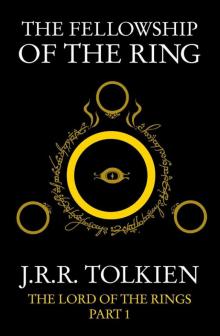 The Fellowship of the Ring
The Fellowship of the Ring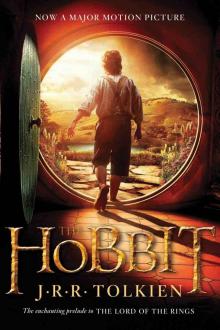 The Hobbit
The Hobbit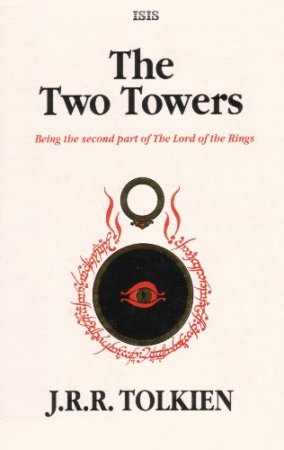 The Two Towers
The Two Towers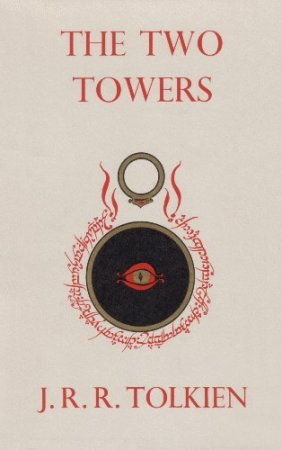 The Return of the King
The Return of the King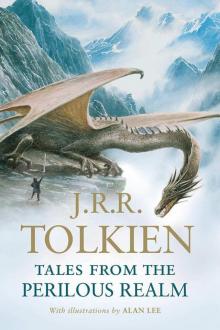 Tales From the Perilous Realm
Tales From the Perilous Realm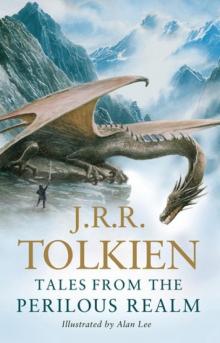 Leaf by Niggle
Leaf by Niggle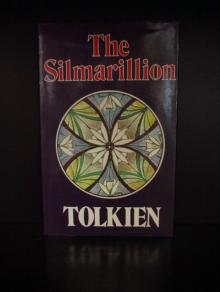 The Silmarillon
The Silmarillon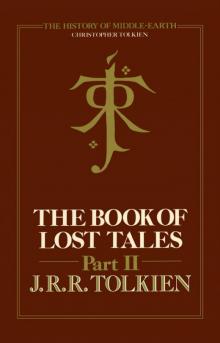 The Book of Lost Tales, Part Two
The Book of Lost Tales, Part Two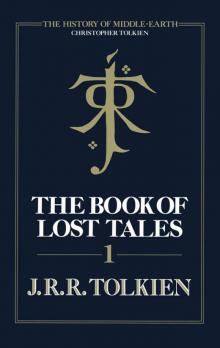 The Book of Lost Tales, Part One
The Book of Lost Tales, Part One The Book of Lost Tales 2
The Book of Lost Tales 2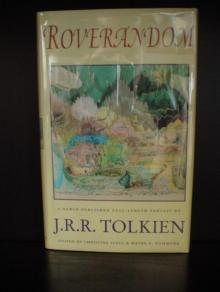 Roverandom
Roverandom Smith of Wootton Major
Smith of Wootton Major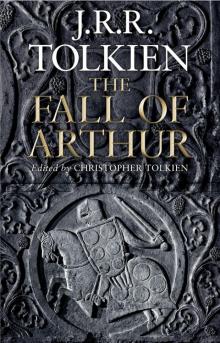 The Fall of Arthur
The Fall of Arthur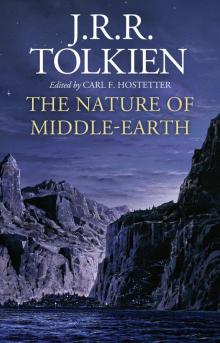 The Nature of Middle-earth
The Nature of Middle-earth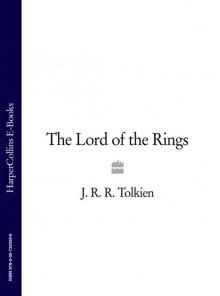 The Lord of the Rings: The Fellowship of the Ring, The Two Towers, The Return of the King
The Lord of the Rings: The Fellowship of the Ring, The Two Towers, The Return of the King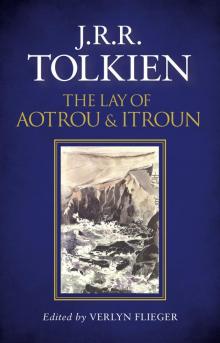 The Lay of Aotrou and Itroun
The Lay of Aotrou and Itroun lord_rings.qxd
lord_rings.qxd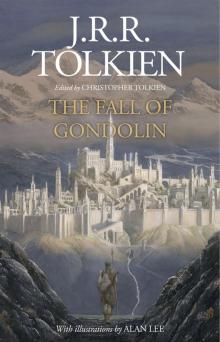 The Fall of Gondolin
The Fall of Gondolin The Book of Lost Tales, Part 1
The Book of Lost Tales, Part 1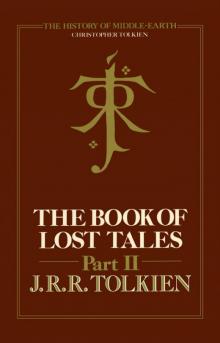 The Book of Lost Tales, Part 2
The Book of Lost Tales, Part 2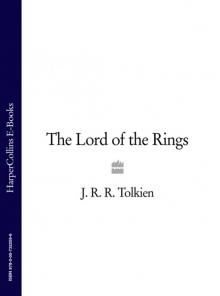 The Lord of the Rings
The Lord of the Rings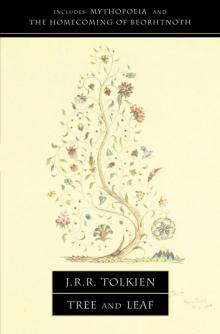 Tree and Leaf
Tree and Leaf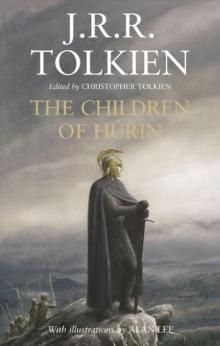 The Children of Húrin
The Children of Húrin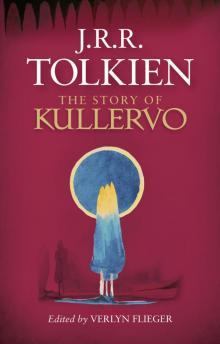 The Story of Kullervo
The Story of Kullervo Letters From Father Christmas
Letters From Father Christmas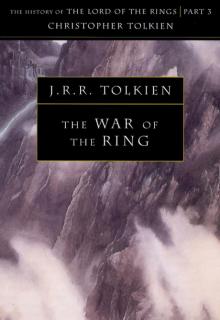 The History of Middle Earth: Volume 8 - The War of the Ring
The History of Middle Earth: Volume 8 - The War of the Ring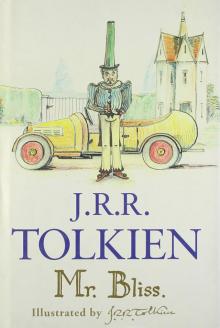 Mr. Bliss
Mr. Bliss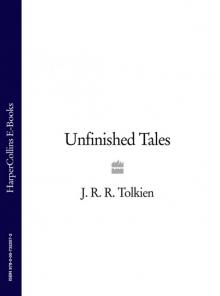 Unfinished Tales
Unfinished Tales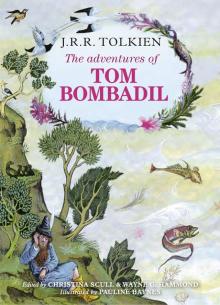 The Adventures of Tom Bombadil
The Adventures of Tom Bombadil Beowulf: A Translation and Commentary, together with Sellic Spell
Beowulf: A Translation and Commentary, together with Sellic Spell The Silmarillion
The Silmarillion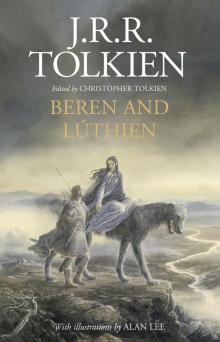 Beren and Lúthien
Beren and Lúthien